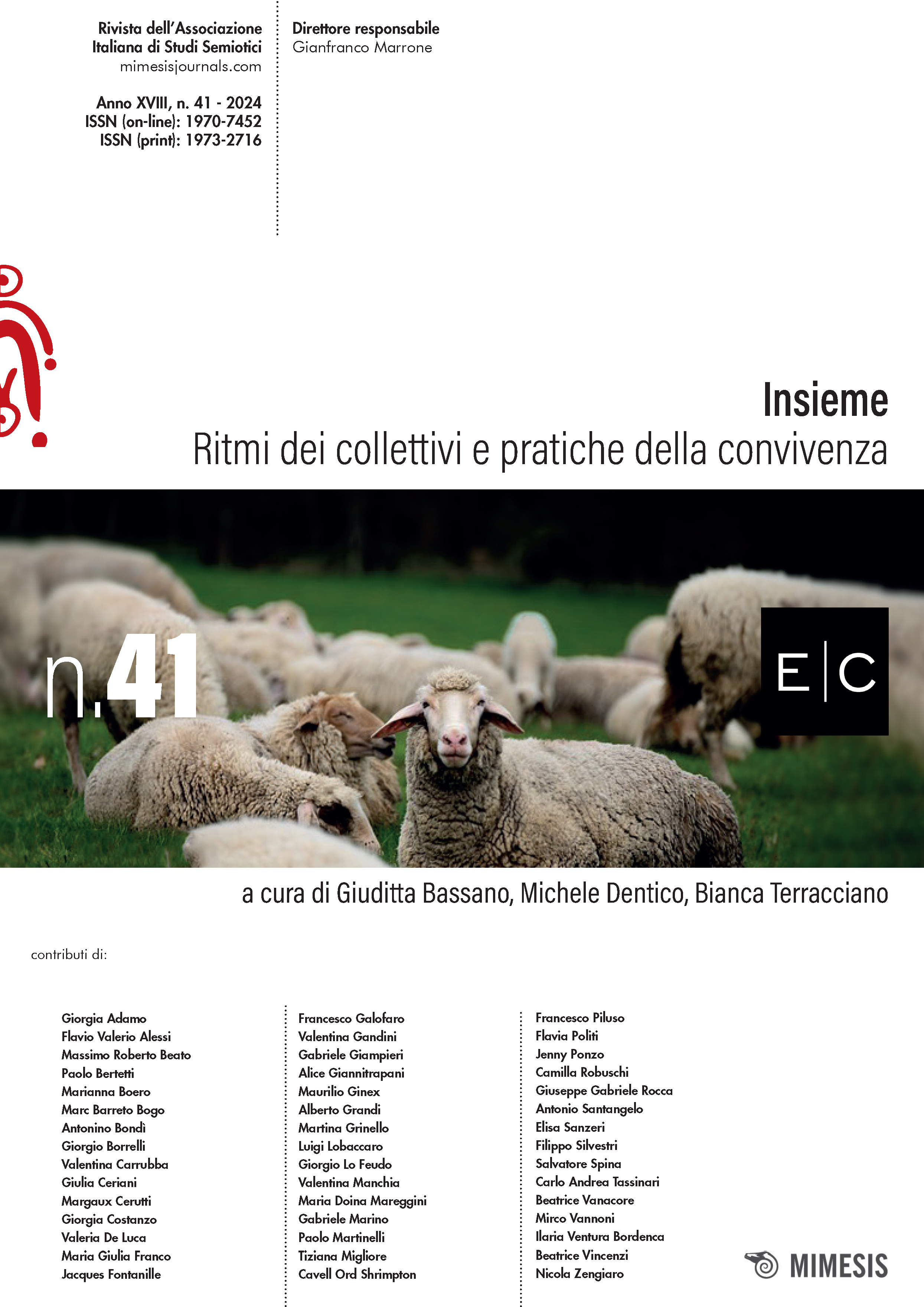Participant Observation. On the Problem of Observables in Ethnosemiotics
Abstract
Ethnosemiotics does not aim to write ethnographies using methods which were developed for different purposes, but to question the conditions of possibility of ethnographic practices from a semiotic point of view: participant observation is not a method; rather, it is a problem. In what way and within what limits does participation in a given practice allow the researcher to grasp the emerging effects of meaning? If the observed practice belongs to a culture unfamiliar to the observer, how can the discrepancies between the respective codes be overcome? To what extent do the interpretations provided by the Other with whom we interact help the observer’s understanding? When should the observer detach from them, to provide a structural explanation? These questions, recurring in ethnological literature, will be addressed starting from two case studies: participant observation of the Orthodox liturgy of the Little Vespers and of the Akathist in the Cathedral of Saint Mary Magdalene in Warsaw. The article proposes the notion of observable to account for the structure of constraints that the world imposes on the observers and the indeterminacy related to their observations.



